The game of pool has been around for centuries. It is said that the oldest use of the word “pool” was used to describe a billiards-like game in 1797 in a Virginia newspaper. The game’s popularity never stopped growing, being enjoyed worldwide by players of all ages.
Today, pool has expanded into numerous variations that can be played anywhere, from your local pub to a professional setting next to the likes of Albin Ouschan, the current number 1 pool player in the world according to the World Pool-Billiard Association (WPA).Whether you are a newbie when it comes to pool or you’ve been playing English pool for quite some time but are now interested to know how to play American pool, search no further. At Hamilton Billiards, we supply a variety of pool tables for sale and can also create bespoke pool tables. With years of experience, we know the ins and outs of this popular game. So, today, we are sharing some of our know-how and will also answer some of the most frequently asked questions regarding the game.
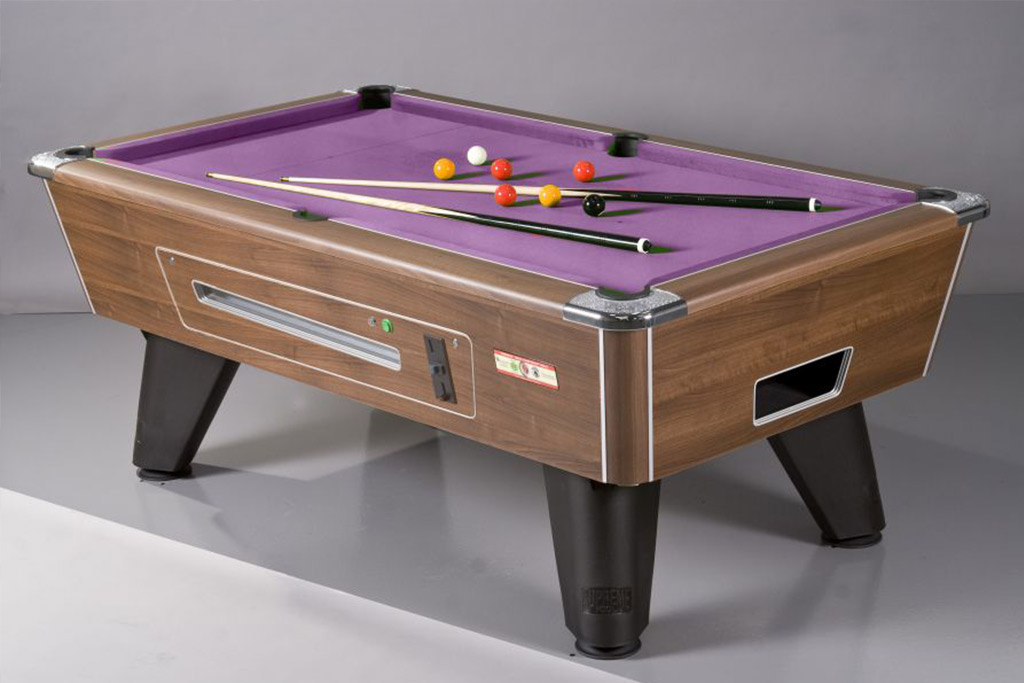
Which pool game is the best?
There is no such thing as the best or the worst pool game. There are various pool games that can be played, including eight-ball, nine-ball, blackball, ten-ball, straight pool, seven-ball, one-pocked and bank pool. Plus, some of these games also feature different variations. So, with hundred and one different ways of playing pool, the best pool game comes down to personal preference. Give each one a go and see which one you prefer.
What is eight-ball pool?
Also known as American pool, eight-ball or 8-ball pool is one of the most commonly played games of pool. Pool balls, often called solids and stripes or spots and stripes, including seven solid-coloured balls numbered from 1 to 7 and seven striped balls from 9 to 15 and the black 8 ball.
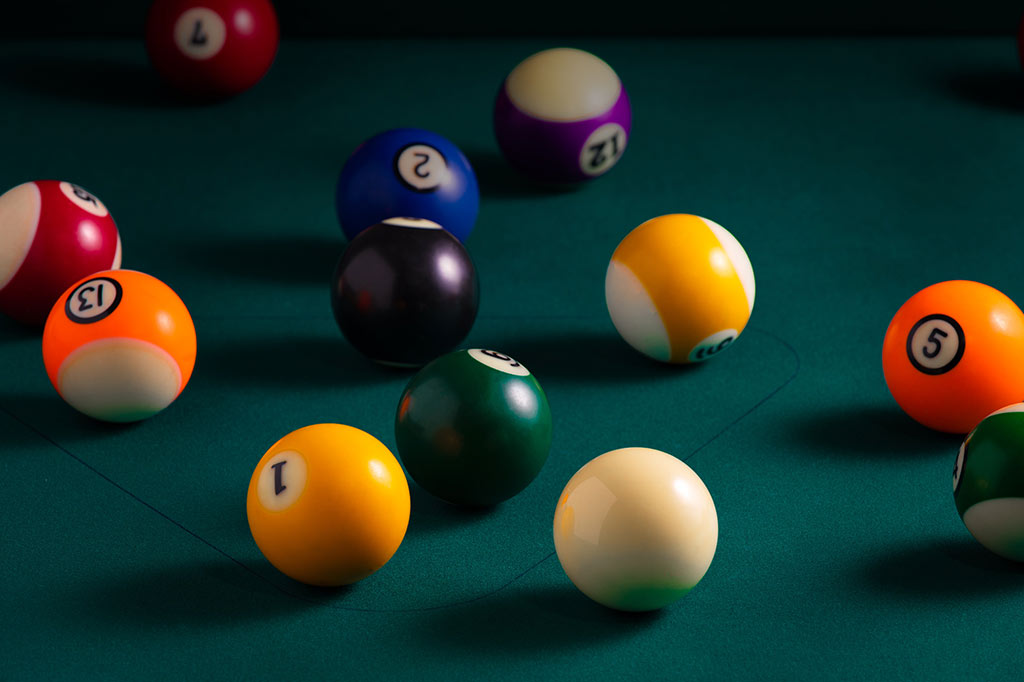
How pool balls are set up?
Pool balls are racked using the triangular rack. Depending on your chosen game of pool, balls should be set up accordingly. Read below how to set up pool balls when playing American pool and English pool.
Who breaks in a game of pool?
The player to break in a game of pool should be chosen at random. You can pick any game of chance to figure out who starts or simply discuss with your opponent who should go first. Whether you prefer tossing a coin in the air or playing rock, paper, scissors – it’s up to you when choosing who should start the game.
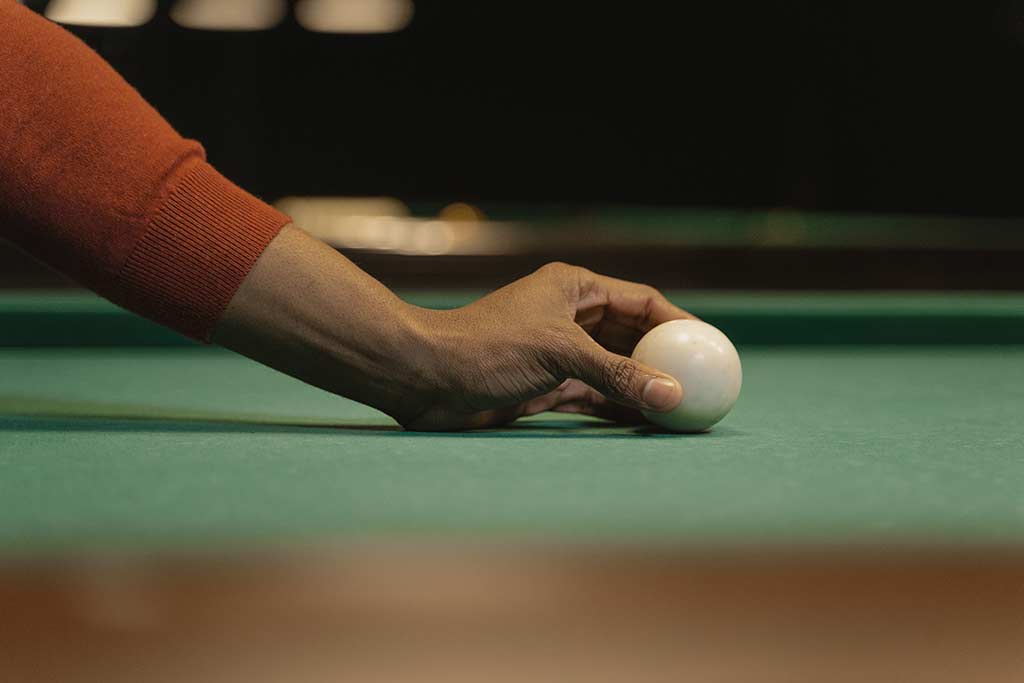
Can you hit the opponent’s ball in pool?
You can hit the opponent’s ball in pool if you’ve hit your ball first. However, it is also important to consider if you’ve hit the opponent’s ball into the pocket, as well as the rules you are playing by: bar rules or league rules.
Bar rules
If you hit the opponent’s ball after hitting your ball first, it’s your opponent’s turn.
If you did not hit your ball first and hit your opponent’s ball into a pocket, the opponent can now place the cue ball anywhere on the table behind the 2nd dot.
League rules
If you hit your opponent’s ball into the pocket without hitting your ball first, your opponent can place the cue ball anywhere on the table.
How to improve pool game?
Practice, practice and more practice. We recommend purchasing training balls, such as the ultimate training cue ball, which is designed to help improve positional play, aiming, potting and more. The Aramith Super Pro Cup Pool Ball Set is also a great practice set as it comes complete with a red-spotted cue ball that enables you to see the spin on the ball and learn how to use certain shots to your advantage.
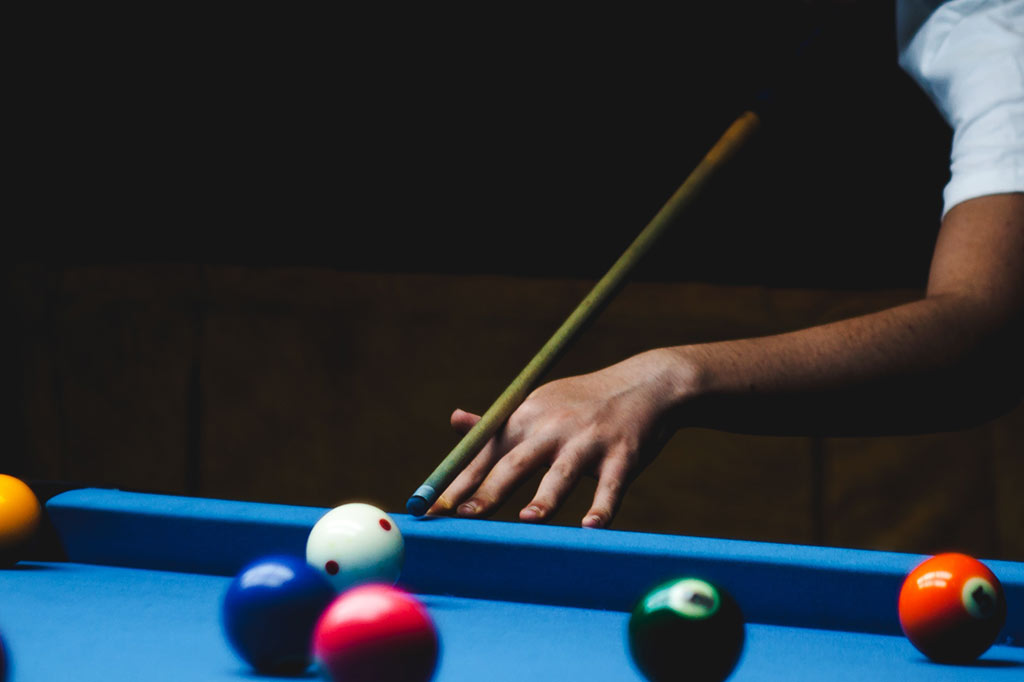
How to play pool.
To try and not confuse you too much about all the varieties of pool, we’re going to focus on two of the most popular games of pool: American pool (or 8-ball pool) and English pool (also known as blackball).
How to play 8-ball pool.
Step 1. Set up the balls.
Get a triangular rack and place the balls inside. Start from the left side to the right. Place either a solid-coloured ball or a striped ball in the corner (depending on the ball you’ve placed in the corner, the set-up will be different).

Solid-coloured ball in the corner. Two striped balls follow. Then, place three solid-coloured balls. On the fourth row, place three striped balls and the black 8-ball on the third position from the bottom. On the last row, from the bottom, place one striped ball, one solid ball, one striped ball and then the remaining solid balls on top. If you’ve placed a striped ball in the bottom left corner, simply do the opposite. Then, place the cue ball anywhere behind the horizontal line (head string).
Step 2. Break.
Pick the starting player at random. If the player breaking makes a successful break and pots either a stripe or a solid ball, that player’s ball type has been determined. If the player breaking pots both a stripe and a solid ball, the player can choose which type of ball he wants to continue potting. If the player creaking doesn’t pot any ball, it’s the opponent’s turn.
Step 3. Taking turns.
Players will take turns shooting their assigned balls. If one of the players commits a foul, such as potting the opponent’s ball or the cue ball, it will be the other player’s turn. Rules will change depending on whether you are playing by bar rules or league rules.
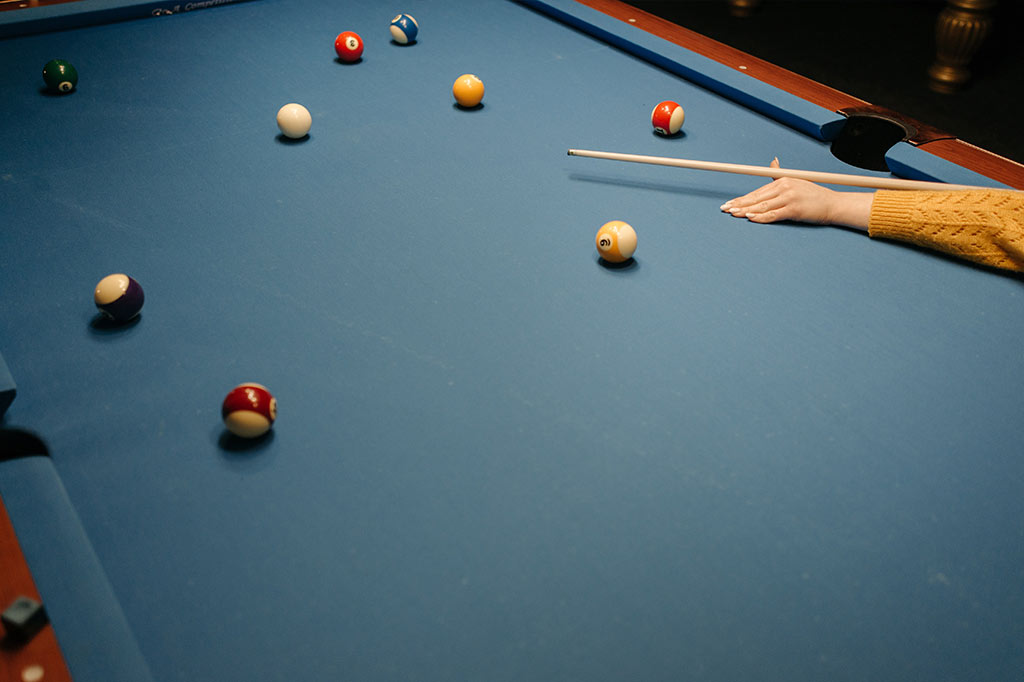
Step 4. Pocket the black 8-ball.
Once a player has pocketed all of their assigned balls, they can try to pot the 8-ball. The first player to pocket the 8 ball after pocketing all of their assigned balls wins the game. However, if the player pockets the cue ball straight after potting the black ball, the win goes to the opponent.
How to play English pool
Step 1. Set up the balls.
English pool is played with yellow balls, red balls and one black 8-ball. Get a triangle rack and place the balls inside. Place a red ball on the left bottom corner. Then, place two yellow balls in the next row. On the third row, place a yellow ball on the bottom and two red balls on top of it. On the next row, place a red ball on the bottom, one yellow ball after, the black 8-ball and then another yellow ball on top. On the last row, place a yellow ball on the bottom followed by a red ball and then a yellow ball. Place the last remaining red balls on top. Colours can be reversed.
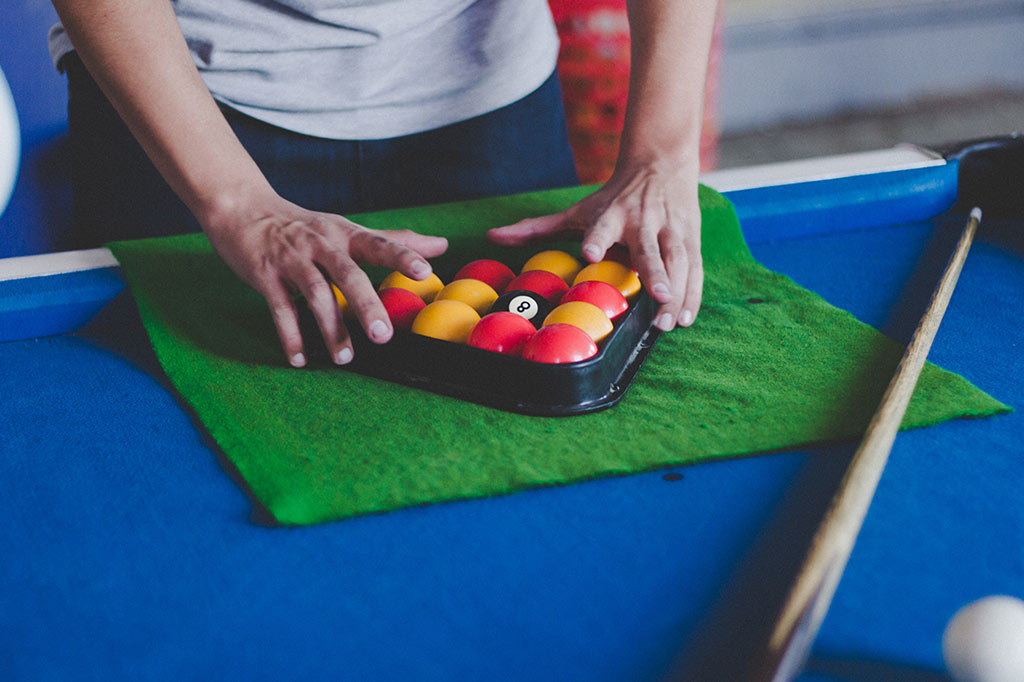
Step 2. Break.
A randomly chosen player places the cue ball behind the horizontal line and hits the balls. A break is successful if the starting player pots a ball and/or at least four balls hit the cushion. If neither of these events happens, it’s a foul break. In case no balls were potted during the break, the table remains open for the opponent.
If the starting player pots a ball, they must play on that colour during the game. When a player has potted both a red and a yellow, they can choose which one to continue playing on.
Note: in the event of a foul, the opposing player gets two shots and can pick up the cue ball and place it anywhere behind the line.
Step 3. Turn-taking.
Players take turns potting their assigned coloured balls. If a player hits the opponent’s ball or the 8-ball without hitting their ball first or completely misses all the balls on the table, the opponent gets two shots. If a player pots a ball they are not supposed to pot (opponent’s ball or cue ball) the same applies.
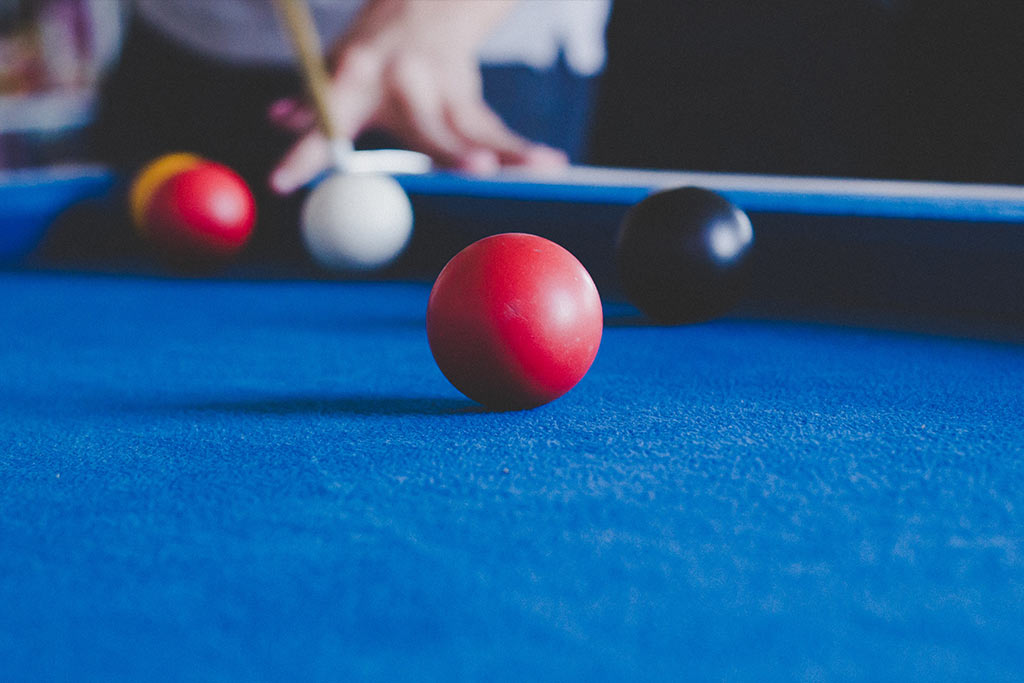
Step 4. Potting the 8-ball.
Once a player has cleared all their balls, it’s time to pot the 8-ball. If a player pots the 8-ball, they’ve won the game. However, if the 8-ball is potted before a player’s balls have been potted, they lose the game.
We hope that this guide has been helpful. If you are looking for the right pool table for your home or want pool balls to train your skills, look no further than Hamilton Billiards. Want further advice? Contact our team today. We can be reached on 01462 743803 or at [email protected].

